Masked Booby
Florida has a number of excellent birding destinations. Unfortunately none of the best ones are on the Treasure Coast, consisting of three counties on the east coast: from north to south – Indian River (Vero Beach), St Lucie (Fort Pierce and Port St Lucie) and Martin (Stuart). While an hour south of us in Boynton Beach Wakodahatchee and Green Cay, two waste water treatment settling ponds with extensive boardwalks wandering through them draw visitors from all over the world. A little over an hour north of us in Viera another drive through on dikes waste water treatment area and Merritt Island National Park with its wonderful Black Point Drive provide viewing of a great many species of birds year round. Northwest of us another hour away at Joe Overstreet Road the road into the landing at the edge of Lake Kissimmee affords a variety of habitats and numerous inland species that we don’t normally encounter along the coast.
Back in the late 1990s and early 2000s, when Dottie Hull was a force in Florida statewide birding circles and a primary leader in St Lucie Audubon Society, she had prevailed on a popular St Lucie County Commissioner to consider building a sorely needed wastewater treatment plant in western St Lucie County with settling ponds and a boardwalk modeled after Wakodahatchee. Early steps were initiated, some engineering completed, and preliminary plans developed. Unfortunately, Dottie Hull passed on, the County Commissioner moved on from the post and, while the plant is still sorely needed with all the greatly increasing residential development in western St Lucie County, there does not appear to be any driving force to create the treatment plant, the settling ponds and certainly not the wonderful birding location that could be a tremendous addition to the attractions of the County.
That having been said, there is one location in Fort Pierce that still attracts birds: Fort Pierce Inlet Jetty Park. This fact was driven home by the recent appearance of a juvenile Masked Booby (photo 1 and top of page) that drew birders from far and near, as it was a great distance from its accustomed Dry Tortugas home. The bird actually cavorted at times right on the Jetty walkway and some birders were fortunate to obtain outstanding close-up photos of it. When I arrived the bird was some distance out at sea.
Crossing the Seaway Avenue Bridge one is treated to the open tank swirling sewage water treatment plant that is one of the main eyesores of Fort Pierce. It really should be moved west. But just after the bridge on the inlet side there is an expansive sand beach which on nice days is jointly inhabited by sunbathers, and virtually all four species of gulls, three species of terns and a nice flock of Black Skimmers (photo 2). Just across the inlet is a small island with a sandbar that often accommodates from time to time most species of egrets and herons, including Reddish Egrets such as this juvenile (photo 3). Occasionally White Pelicans and even Roseate Spoonbills can be on that sandbar, if it’s not a weekend when pleasure boaters often moor there.
Upon arriving at the end of Seaway Drive and entering the Jetty Park parking area if there are fishermen cleaning fish at the tables provided for that purpose one cannot help but see all the herons, egrets, pelicans and even Woodstorks patiently waiting for the fishermen to toss them unwanted scraps of fish entrails, heads and even the fish skeletons after filleting. There will be Fish Crows and Boat-tailed Grackles there as well, the final on the ground clean-up crew.
Overhead in the trees Eurasian Collared Doves can be found. Whether fishermen are at the table or not, there will undoubtedly be a Brown Pelican standing guard on the rocks right in the same area. (photo 4) Following the paved concrete walkway out to the end of the jetty, one will quickly see Ruddy Turnstones (photo 5), Sanderlings and sometimes Western Sandpipers working in and around the rocks and even underfoot as they seek food scraps that fishermen toss to them.
Over the water, gulls, terns, and Osprey fly back and forth particularly working the area where the inlet waters meet the ocean at the end of the jetty. It is a good location to sometimes see Bonaparte’s Gulls like this one appearing to fly just under a fisherman’s rod (photo 6). Overhead, Magnificent Frigatebirds move back and forth as they head farther north to ride the wind currents rising off the high-rise apartment buildings on North Hutchinson Island (photo 7). Uncommon to rare birds in the area, such as this Red Knot (photo 8), Purple Sandpipers, Brown Boobys, and, if the winds are right, Northern Gannets sometimes appear. The seating areas provided are convenient spots for the birds to wait to scavenge for scraps, birds that otherwise you would never be able to begin to approach, such as this Fish Crow. (photo 9)
While Inlet Jetty Park is certainly not Wakodahatchee, Green Cay or Merritt Island, it still is a place to find birds and sometimes in the pool formed behind the spur jetty off the main jetty, manatees. It may even be the best place in St Lucie County. I would be pleased to hear any other suggestions for other candidates. With all the new wonderful improvements underway in downtown Fort Pierce, with new buildings, a state of the art mega yacht repair facility, and general gentrification, it just seems totally out of character to continue to maintain this sewage treatment plant eyesore in such a prime location.
Is there anyone out there ready to start the ball rolling again? This old worn out writer avid environmentalist snowbird is unfortunately not in a position to lead such a charge, but maybe planting the suggestion seed might spark someone. Anyone? Now, once again I will get off my soap box.









